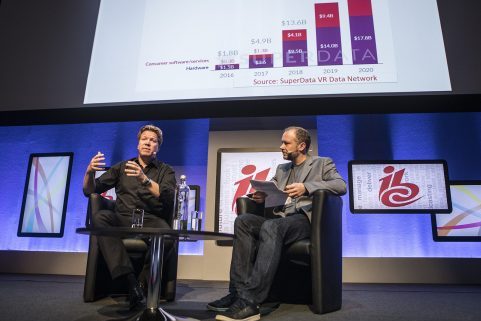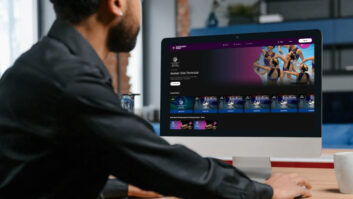
The president of VR app store Viveport has urged broadcasters to make an investment in VR or risk missing out on an ecosystem that has the potential to offer audiences a huge array of experiences.
Setting out his pitch to the broadcast industry during the Saturday afternoon keynote, ‘What’s happening in VR?’ Rikard Steiber – who runs the app store built by high-end VR platform HTC Vive – said that the first steps broadcasters needed to take was to try it for themselves.
“It’s such an experiential medium, you can’t intellectualise it. You have to take the red pill and just run with it,” he said.
The next step, according to Steiber, was for content brands to partner with Vive and make VR a reality for the industry. As a case in point he cited Vive’s partnership with CBS Digital on the second series of its Netflix show, Stranger Things.
The show had experimented with 3600 video before, but ahead of the second season, the shows producers invested in a high-end experience on Vive, with monsters slowly creeping towards the viewer in the dark.
According to Steiber, Viveport – which is often described as ‘Netflix for VR’ – was the perfect platform for content creators to experiment with new content. “It’s a great way for developers and the media industry to make money and for consumers to discover content,” he said.
“We have 20,000 developers registered and many of these have now decided to exclusively focus on making content for us.”
Steiber added that new AR and VR experiences were just around the corner as the firm worked on developing a new ecosystem. He told IBC Conference delegates to expect ‘full presence VR’, which puts trackers on wireless shooters for a more authentic experience.
Haptic suits will also allow users to experience physical feelings so they can feel a physical shot from an arrow and experience different temperatures by simulating hot and cold.
Steiber also highlighted the creative steps that third-party developers had taken, by showing a demo of an ‘A-HA’ app. It takes the famous 1980s pop promo featuring Norwegian rock band A-ha in which a comic strip character comes to life, and allows users to transpose it into their own backgrounds.
“If VR is turning imagination into reality then AR is about doing the opposite, turning your reality into imagination,” he said.






